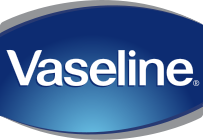 What do you wear to gain traction while running in icy or snowy conditions? I personally wear YakTrax when I want extra traction and sure footing. I know of people who drill small sheet metal screws into their shoes, and I’m sure people use other brand traction devices. What is your preferred device?
What do you wear to gain traction while running in icy or snowy conditions? I personally wear YakTrax when I want extra traction and sure footing. I know of people who drill small sheet metal screws into their shoes, and I’m sure people use other brand traction devices. What is your preferred device?
There are a few factors I consider before adding my YakTrax to my shoes.
1) Where am I going?
We live by a hospital so if I run that direction I’m guaranteed that a large part of my run will be on plowed the majority of my run. Running the Lakes? They will be plowed, but not to the ground. Downtown – plowed to the sidewalk.
2) What are the conditions of the trail/sidewalk?
This depends on where you go. Most actual off-road trails won’t have been plowed and I often will wear the YakTrax on them just to be safe.
3) Is there fresh snow/ice?
If the snow/ice is fresh or falling then I’d probably wear them just to be safe.
I’ve worn my YakTrax a few times this year for runs. A lot of my runs from home end up having a fair amount of the run being on sidewalks that are well taken-care of (hospital or downtown) so I don’t wear them a lot.
The YakTrax basically use a coil of wire to form an X on the ball and heel of your shoe. They pull over the sole of your shoe and have a strap that helps hold them on. They make a very distinctive mark in the snow! When running on clear pavement these coils add a little bit of spring to your step and if worn for long stretches can mess up your shins. For shorter periods of clear pavement you can survive or run in a snow bank to prevent the shin pain.
In the past when I’ve known I’ll want them for running around a park I’ve crossed the street or even run in the street instead of running on the hospital’s clear sidewalk.
I’ve been wearing YakTrax since we moved to Minnesota 6 years ago. I wore my first pair out mid-winter last year and bought a new pair of YakTrax Pro. I did receive a free pair of YakTrax Pro to review this winter (and some hand warmers).
My YakTrax wore out similar to how the heel of my shoe wore down. The rubber and coils on the back of the heel eventually broke due to my running form. I didn’t keep track of how many miles it took for this to occur, but having them for almost 5 years seems like a pretty good amount of time for them to last.
Another benefit of YakTrax over sheet metal screws is that you can wear them on virtually any shoe (mine won’t fit onto my winter boots, but do on my every day winter shoes). This also allows you to rotate through your running shoes instead of only wearing (and ruining) one pair of shoes!
Have you enjoyed your YakTrax or other traction method? What works for you?



